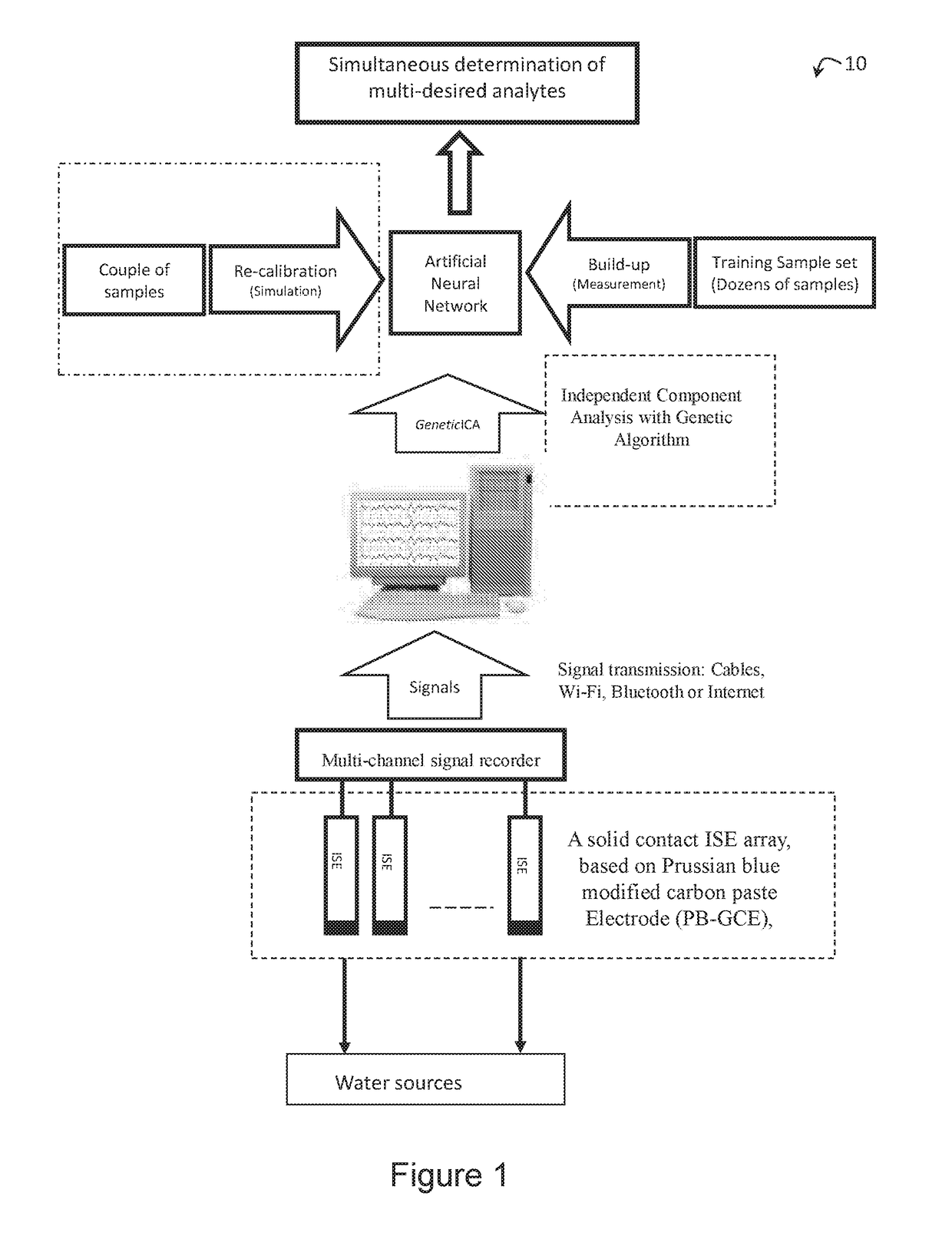Method of recalibrating a device for assessing concentration of at least one analyte ion in a liquid
a technology of at least one analyte ion and liquid, which is applied in the direction of material analysis by electric/magnetic means, measurement devices, instruments, etc., can solve the problems of inaccurate calibration of the ises' response, sensitivity and selectivity of the ises to the major selected ions gradually degrade over time, and improve the pattern recognition accuracy of electronic tongue systems. , the effect of improving the prediction accuracy
- Summary
- Abstract
- Description
- Claims
- Application Information
AI Technical Summary
Benefits of technology
Problems solved by technology
Method used
Image
Examples
Embodiment Construction
[0052]According to an embodiment of the present invention there is provided a method of recalibrating a device for assessing concentration of at least one analyte ion in a liquid, as shown in FIGS. 1 and 6. FIG. 1 shows a block diagram 10 of the device for assessing the concentration of at least one analyte ion in a liquid in more detail. The device includes a plurality of ion selective electrodes (ISEs) each of which generate a signal in response to sensing a selected ion in a liquid, and a multi-channel signal recorder that send signals to a data processing unit. The data processing unit implements a neural network algorithm that has been trained to calculate ion interference between the selected ion and other ions in the liquid sensed at one of the electrodes and / or electrode interference between ones of the electrodes sensing a same selected ion based on a result of a comparison of training data indicative of known ionic concentrations applied to the neural network algorithm and...
PUM
| Property | Measurement | Unit |
|---|---|---|
| concentration | aaaaa | aaaaa |
| ionic concentrations | aaaaa | aaaaa |
| ionic concentration | aaaaa | aaaaa |
Abstract
Description
Claims
Application Information
 Login to View More
Login to View More - R&D
- Intellectual Property
- Life Sciences
- Materials
- Tech Scout
- Unparalleled Data Quality
- Higher Quality Content
- 60% Fewer Hallucinations
Browse by: Latest US Patents, China's latest patents, Technical Efficacy Thesaurus, Application Domain, Technology Topic, Popular Technical Reports.
© 2025 PatSnap. All rights reserved.Legal|Privacy policy|Modern Slavery Act Transparency Statement|Sitemap|About US| Contact US: help@patsnap.com



